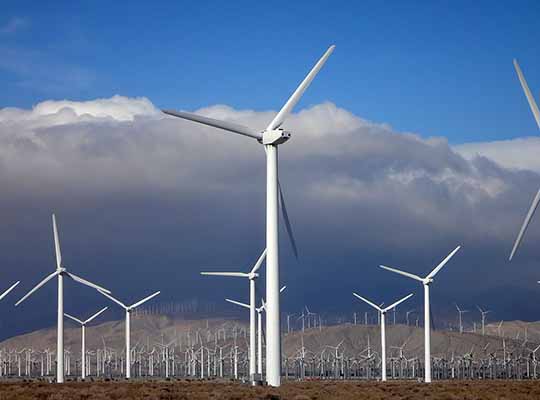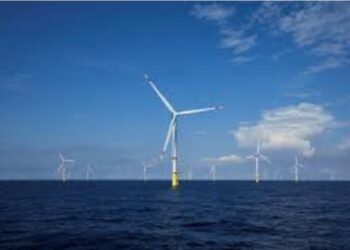NEW YORK : The Insight Partners published latest research study on “Wind Energy Market Forecast to 2028 – COVID-19 Impact and Global Analysis By Capacity (Upto 1MW, 1-3 MW, 3-5 MW, and Above 5MW) and Installation (Onshore and Offshore)”, the global wind energy market size is expected to grow from USD 85,375.22 million in 2022 to USD 1,36,544.05 million by 2028; it is anticipated to grow at a CAGR of 8.1% from 2022 to 2028.
Wind Energy Market Report Scope & Strategic Insights:
| Report Coverage | Details |
| Market Size Value in | USD 85,375.22 Million in 2022 |
| Market Size Value by | USD 1,36,544.05 Million by 2028 |
| Growth rate | CAGR of 8.1% from 2022 to 2028 |
| Forecast Period | 2022-2028 |
| Base Year | 2022 |
| No. of Pages | 150 |
| No. Tables | 62 |
| No. of Charts & Figures | 72 |
| Historical data available | Yes |
| Segments covered | Capacity, and Installation |
| Regional scope | North America; Europe; Asia Pacific; Latin America; MEA |
| Country scope | US, UK, Canada, Germany, France, Italy, Australia, Russia, China, Japan, South Korea, Saudi Arabia, Brazil, Argentina |
| Report coverage | Revenue forecast, company ranking, competitive landscape, growth factors, and trends |
Wind Energy Market: Competitive Landscape and Key Developments
BYD Company Ltd; ENERSYS; SolarEdge Technologies Inc; sonnenGroup; and SAMSUNG SDI CO., LTD are a few of the key players profiled in this wind energy market report. Several other essential wind energy market players were analyzed to get a holistic view of the market and its ecosystem. The wind energy market report provides detailed market insights, which help the key players to strategize the growth in the coming years.
In November 2021, Siemens Gamesa Renewable Energy signed an agreement with Renewable Energy Systems (RES) in Canada to supply the 100-MW Hilda wind project in Alberta.
In 2021, the UK’s Crown Estate approved six fixed offshore wind projects with a combined capacity of ~8GW.
The wind energy market is segmented into North America, Asia Pacific (APAC), Europe, the Middle East & Africa (MEA), and South America (SAM). APAC dominated the wind energy market in 2021, and it is expected to continue its dominance over the forecast period. The growth is primarily attributed to favorable government policies, increasing investment in wind energy projects, and the reduced cost of wind energy, which led to increased adoption of wind energy. As per the Wood Makenzie projections, APAC will add 122GW of new wind capacity by 2030, surpassing the estimated new capacity across Europe and the US for the same period of 2021-2030.
As per the GWEC report, Taiwan, Japan, South Korea, Vietnam, and India will also rank among the world’s twenty-largest offshore wind markets, adding a combined 29GW of new capacity from 2021 to 2030. Wind power currently accounts for 10% of APAC’s power capacity mix, while coal accounts for 45% and petrol contribute 12%. This energy consumption is expected to change in 2050, as the shares of wind and solar energy will both double to account for a combined 50% of the region’s power capacity mix by 2050. Taiwan is one of the most promising offshore wind markets. Taiwan introduced its Round 3 auction Phase 1, where an associated 3GW capacity will come online from 2026 to 2027. A total of 15GW will be made operational from 2026 to 2035.
In terms of the wind energy market share, North America accounted for the second largest region. In 2021, a surge in pipeline projects for installing wind energy projects had been witnessed in the US owing to a rising investment in renewable enrgies. As per the US Department of Energy, the US offshore wind pipeline grew 24% in 2020, with total installation of 35,324 MW turbines now in various stages of development. The Bureau of Ocean Energy Management created five new Wind Energy Areas in New York with a capacity of ~9,800MW, representing a large portion of the pipeline growth during 2020-2021. Massachusetts’ Vineyard Wind I became the first approved commercial-scale offshore wind energy project in the US. There are 15 projects in the US offshore pipeline that have reached the permitting phase, and eight states have set offshore wind energy procurement goals totaling 39,298MW by 2040.
The wind energy market in Europe is expected to grow during the forecast period. The declining cost of generating wind power, growing awareness of environmental issues, and supportive government strategies through financial incentives are expected to support the market growth in the region. According to the government officials of Europe, the region installed 17.4GW of new wind power capacity in 2021, which increased by 18% compared to 2020. Europe currently has 236GW of installed wind power capacity, including 207GW onshore and 28GW offshore.
In February 2022, 81% of the new wind turbine installation in 2021 were onshore. The leading European countries, including Sweden, Germany, and Turkey, built the most onshore wind farms. The UK held the highest number of new wind turbine installations because they account for most of the new offshore installations. Europe is expected to register 236GW of wind power capacity by 2022. Germany continues to have the largest installed capacity in Europe, followed by Spain, the UK, France, and Sweden. Seven other countries—Italy, Turkey, the Netherlands, Poland, Denmark, Portugal, and Belgium have more than 5GW of wind tuerbine installed each. Further, as per the GWEC report, Europe is expected to install 116GW of new wind farms between 2022 and 2026; three-quarters of these new capacity additions will be onshore wind. Thus, such growth prospects in wind energy are anticipated to boost the market growth over the forecast period.
The Middle East & Africa is expected to witness moderate growth in the wind energy market during the forecast period. South Africa, Egypt, Morocco, and Kenya are a few of the prominent countries dominating the demand for wind energy. These countries are significantly contributing to the growth of producing wind energy, which is boosting the market growth. The key factors responsible for the growth of the market are supportive government policies, growing initiatives to cater to the rising power demand using clean energy sources, and reducing dependency on fossil fuels are expected to fuel the market growth over the coming years. For instance, in June 2022, A Saudi Arabian energy company signed an agreement with the Egyptian government with a project cost worth US$ 1.5 billion to develop a major wind project in Egypt. The facility will provide 1.1GW of wind power once the construction is completed; it will also provide electricity to more than 1 million homes.
Wind Energy Market: COVID-19 Overview
The COVID-19 outbreak dramatically impacted the global economy in early 2020, and the crisis has hampered business activities in manufacturing industries. Before the onset of the COVID-19 pandemic, the wind energy market was experiencing substantial growth owing to the growing awareness among consumers, planned strategies and projects as per timelines, and supportive government policies framework. Further, significant investment initiatives in wind energy farms were driving the market growth. However, the projects under construction were delayed or postponed after the onset of the pandemic, which has adversely affected the market. In a few countries, access to some sites was allowed under full lockdown, while in others, work on some projects could not continue even under a partial lockdown. Further, the crisis has restricted all business deals, collaborations, and partnerships, which significantly hampered the wind energy market. However, wind power sales increased in the second half of 2020 due to a high number of wind installations.
Wind Energy Market: Capacity Overview
Based on capacity, the wind energy market is segmented into upto 1MW, 1-3 MW, 3-5 MW, and above 5MW. The 1-3 MW segment of the wind energy market is expected to register the highest CAGR during the forecast period.













